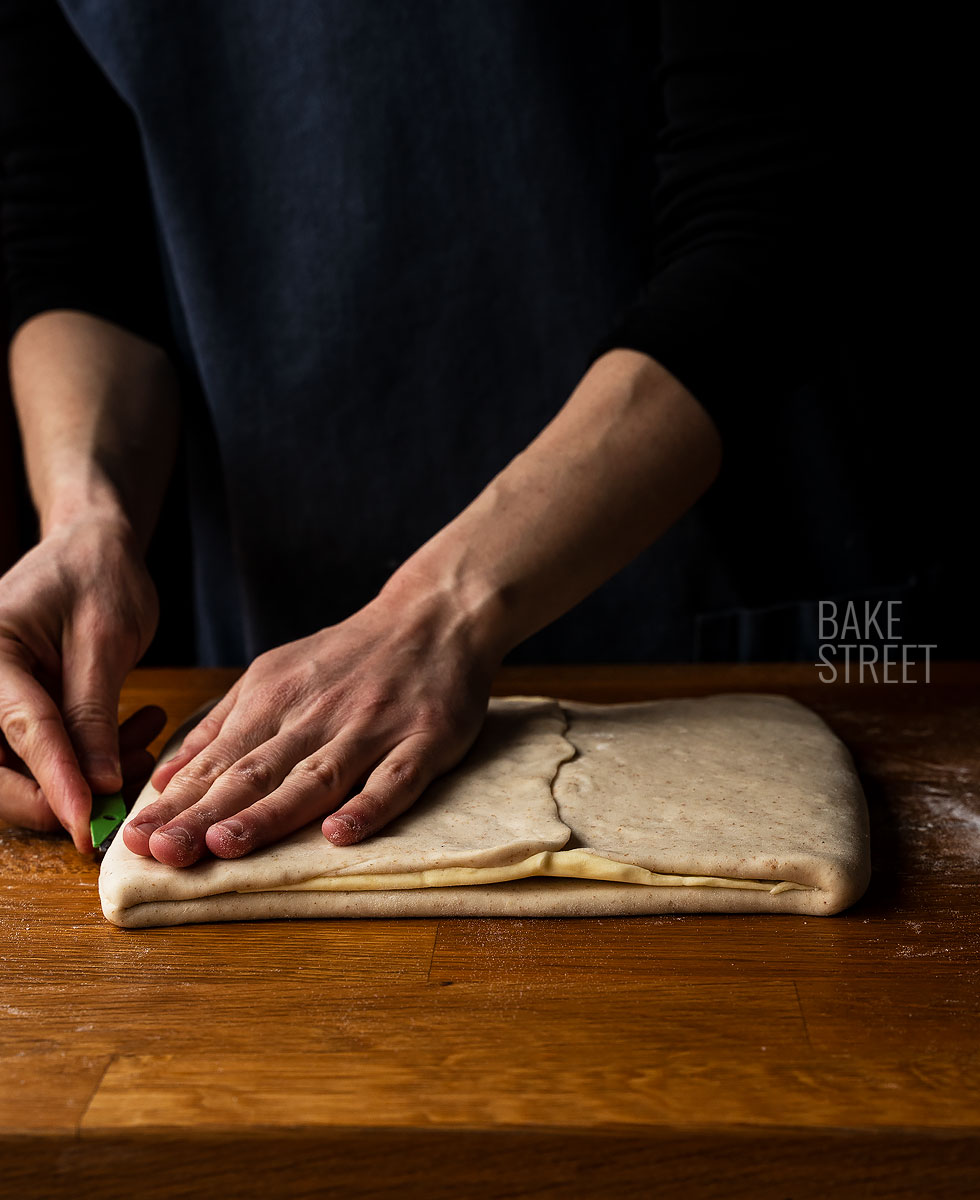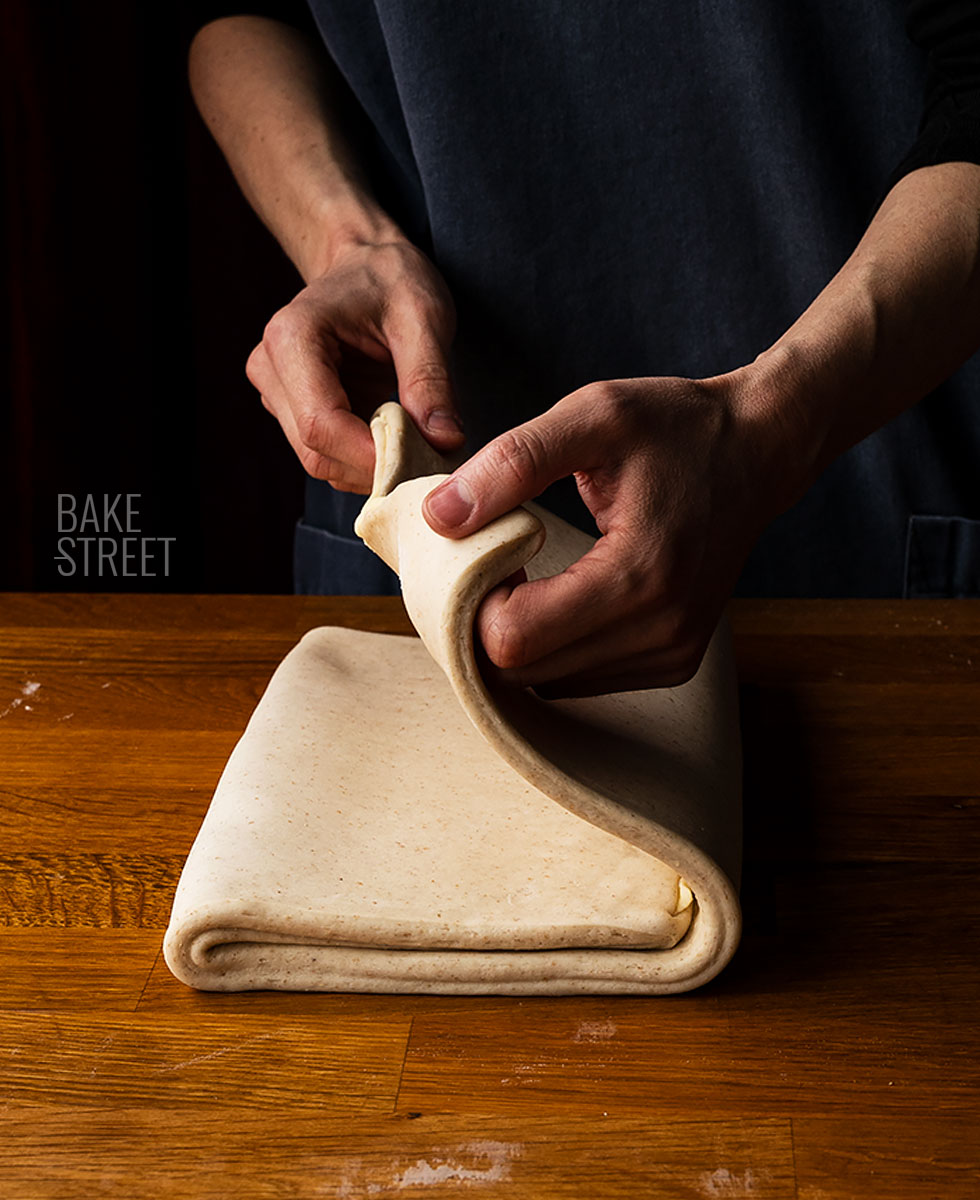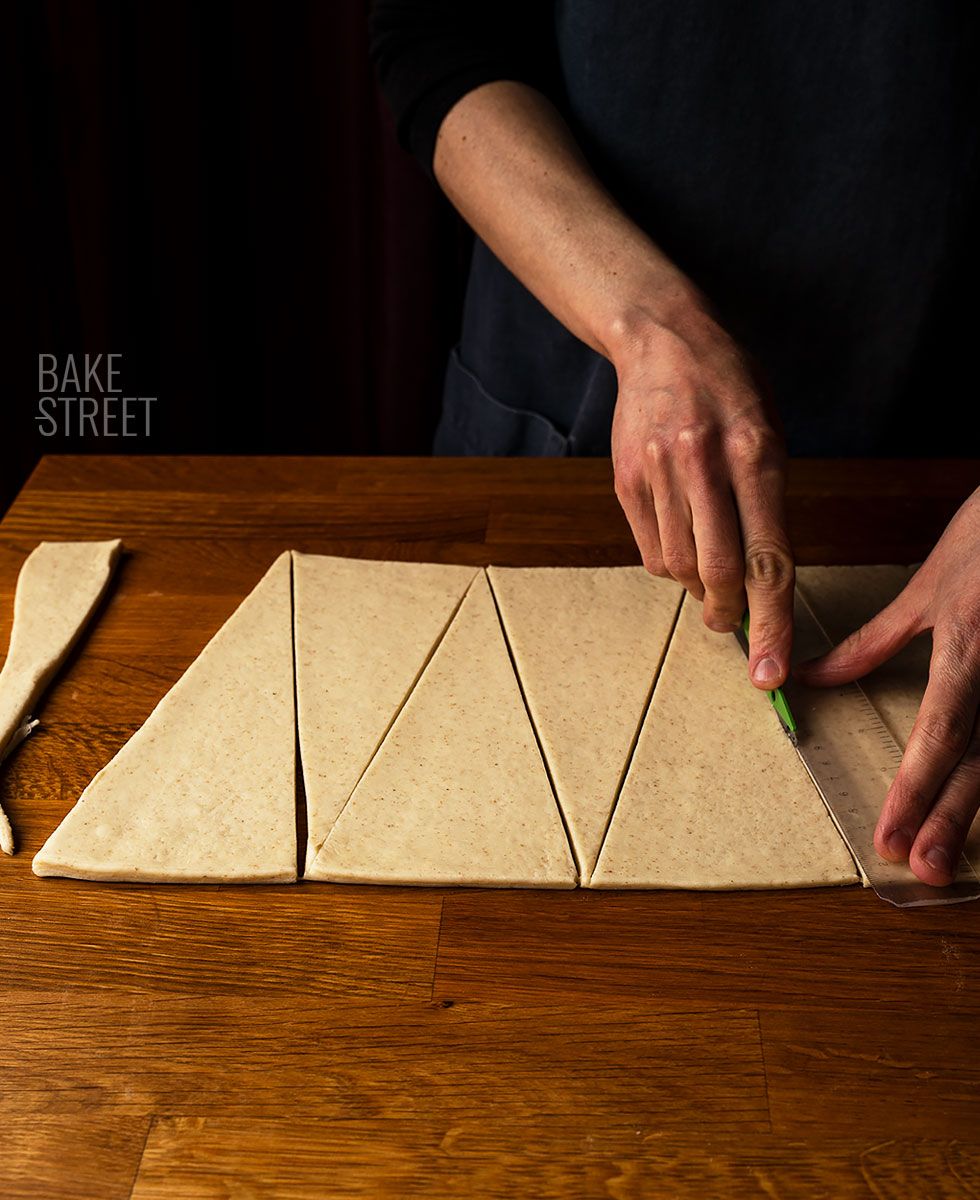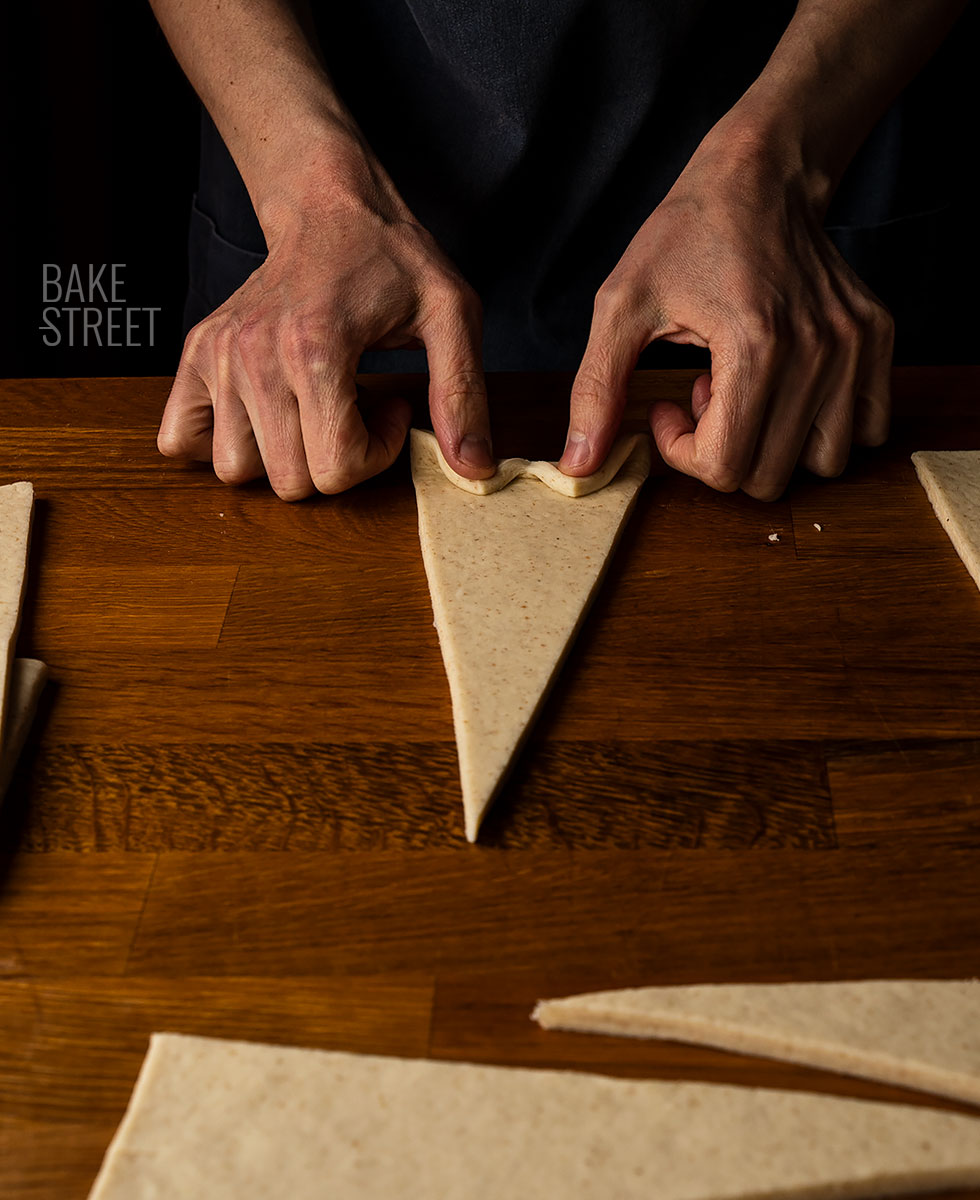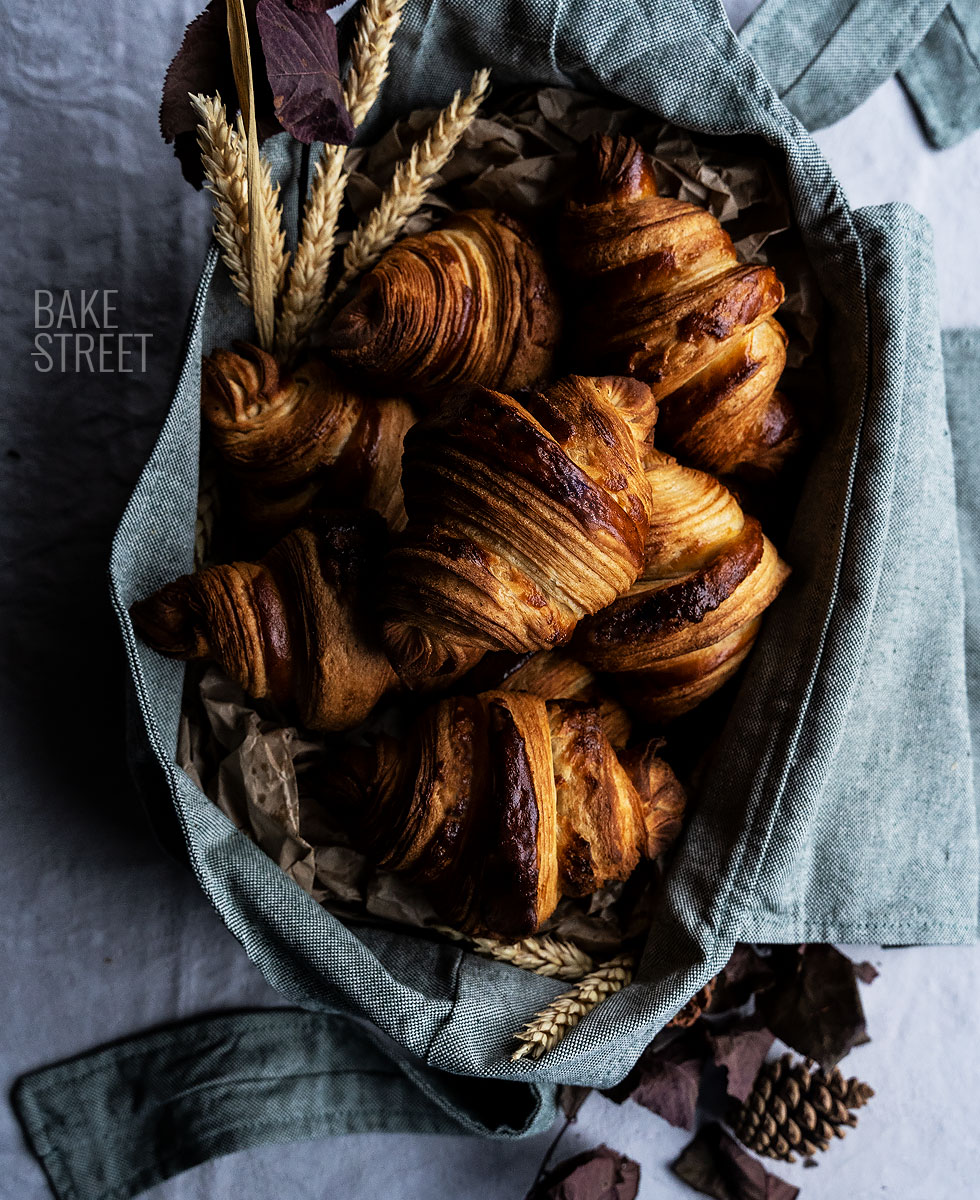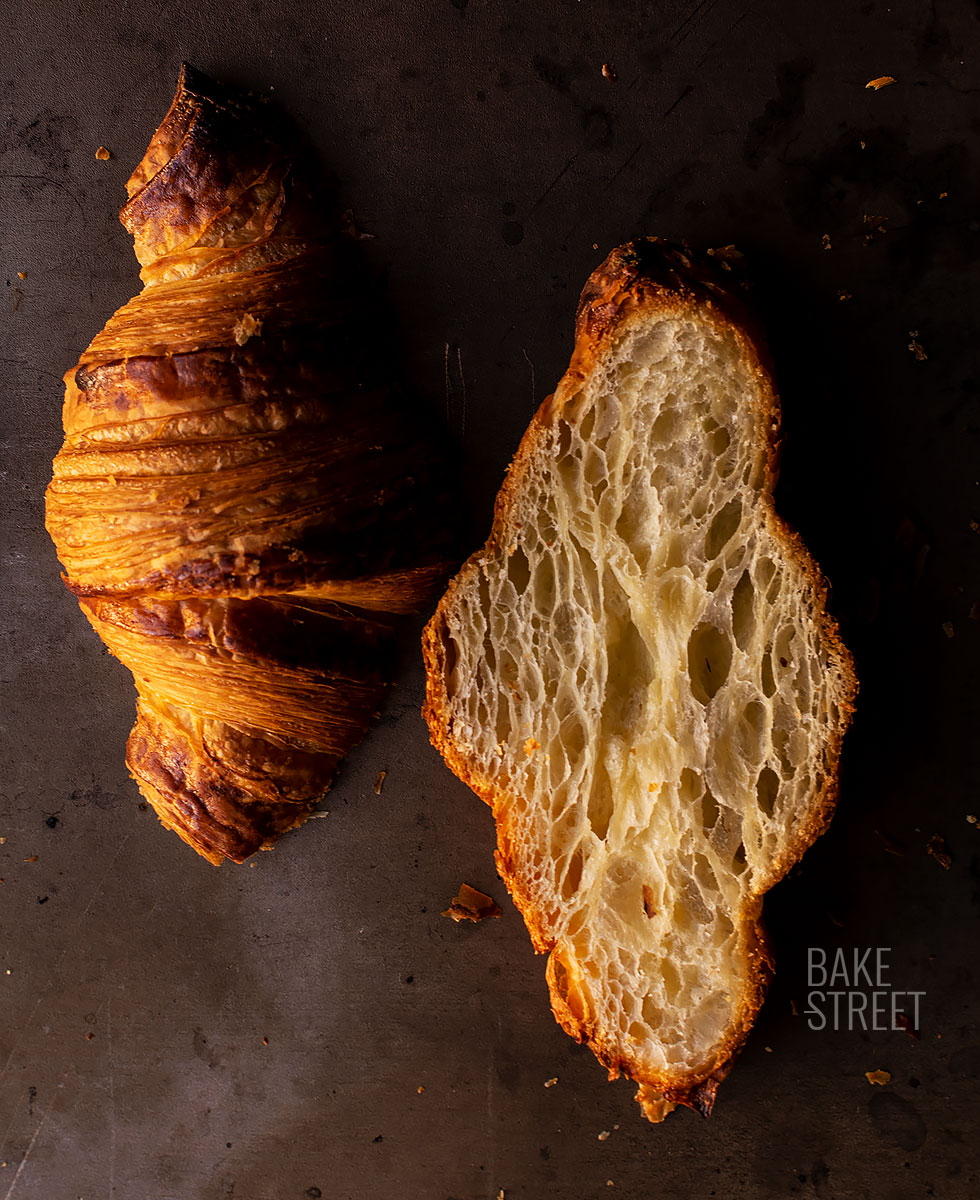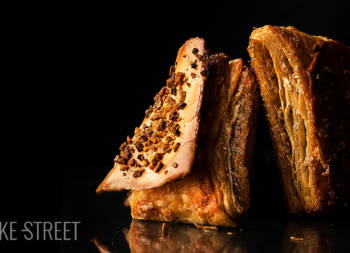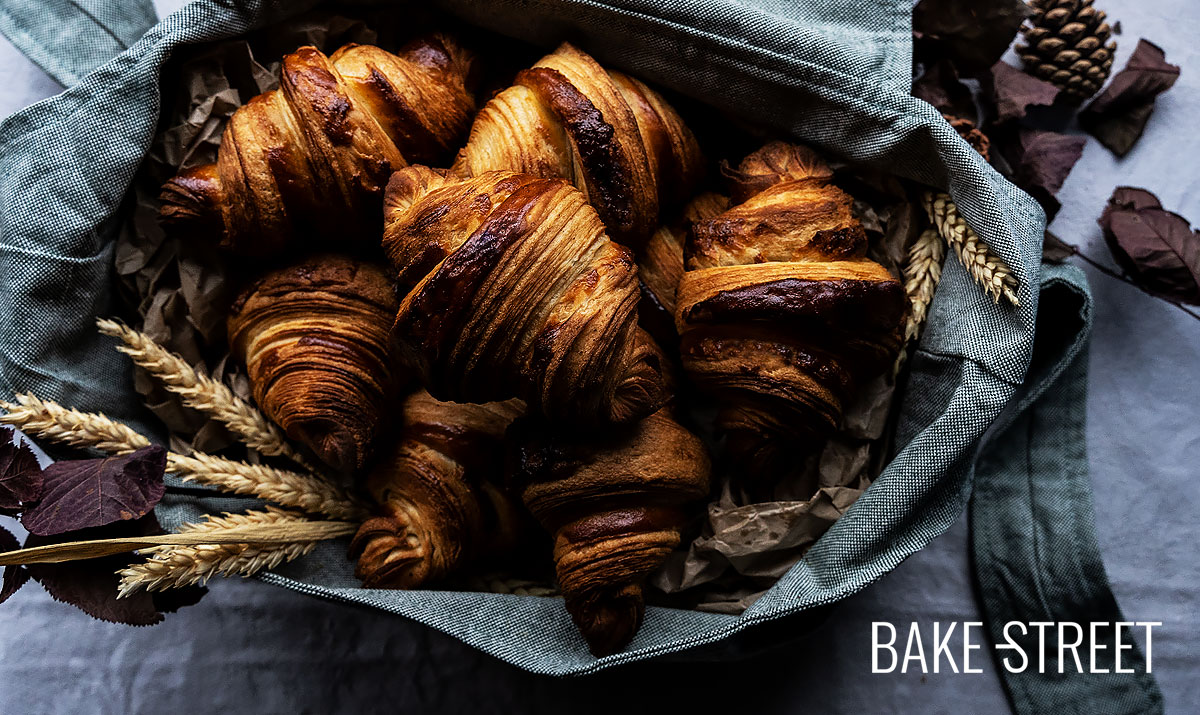
How to make croissants
There are few things better than having a freshly baked croissant for breakfast with a cup of coffee. Who says breakfast, says lunch or dinner, because for me it’s one of those things that comes in handy at any time of the day. I would never say no to a croissant. Only if it’s badly made… So if you’re one of me, you can’t miss out on how to make croissants at home.
I’m not going to lie to you and say that it’s a very easy process, because it’s not. But neither is it an impossible process to carry out, and even less so if we follow each and every one of the steps I let you. When making croissants there is something very important to respect at all times and that is the temperature. Not only of the dough and butter, which is very important, but of almost the entire process in general.
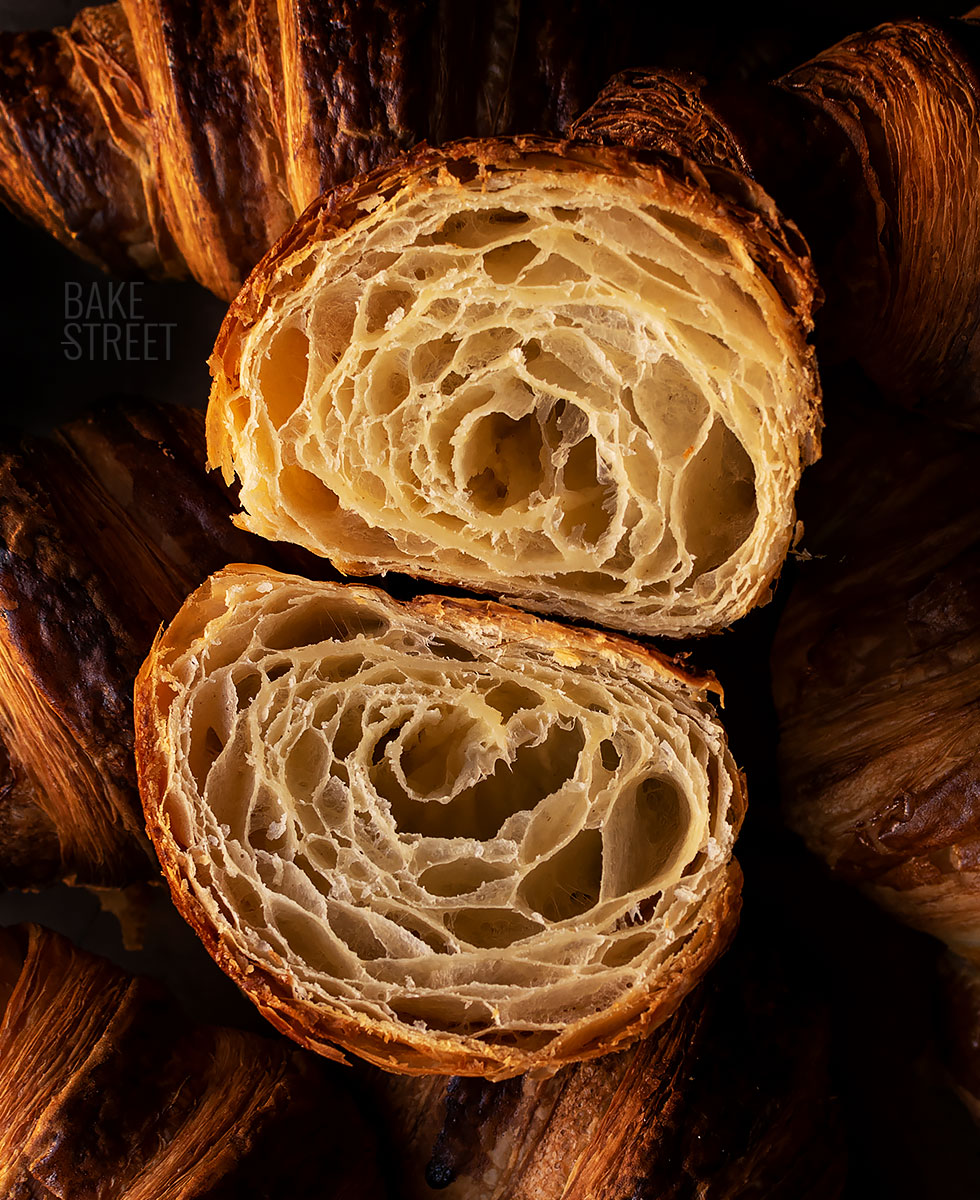
The croissant is a delicate product, requiring patience and a lot of care in all the steps of the process. It is an elaboration that cannot be forced in any part of the elaboration, but even less so in the fermentation. The main component of this recipe is butter, and if we exceed the temperature in any part of the process, we will exceed the melting point of the butter. The result will not be a croissant, but a brioche bun, because the butter will be integrated into the dough and will not form layers as we expect it to do.
Croissants origin.
The origin of the croissant is an elaboration of viennoiseries doughs. In this case, laminated. If you want to know a little more about this type of dough, what is laminated and how to calculate the folds that the dough will have, be sure to read the post on “How to make Danish dough“. Here I also talk about flour, butter and yeast.
Contrary to popular belief, its origin is not French, but Austrian.
The word croissant means “crescent” in French, due to its shape of the lunar crescent. Its appearance is directly related to the war that led to its creation.
It was during the year 1683, a time when the Ottoman Empire was advancing through Europe, conquering territories in its struggle against the Holy Roman Empire. After ravaging Constantinople, the Balkans and part of Hungary, the Ottoman army set its next objective in Vienna.

The city was surrounded by a wall, so the strategy of the 20,000 soldiers was to dig tunnels under the wall to reach the centre of the city and surprise their enemies in the middle of the night.
The Viennese bakers, like all the bakers in the guild, were working past midnight to have their bread ready first thing in the morning. They began to hear noises and, out of concern, raised the alarm. Thanks to this warning, they were able to prevent the attack and defend the city. In celebration of this victory, the bakers created a bun in the shape of a crescent moon, the same shape as the one on the Ottoman flag.
The croissant symbolised the way to ‘eat a Turk’, a sweet revenge carried out thanks to the collaboration of the Viennese bakers.
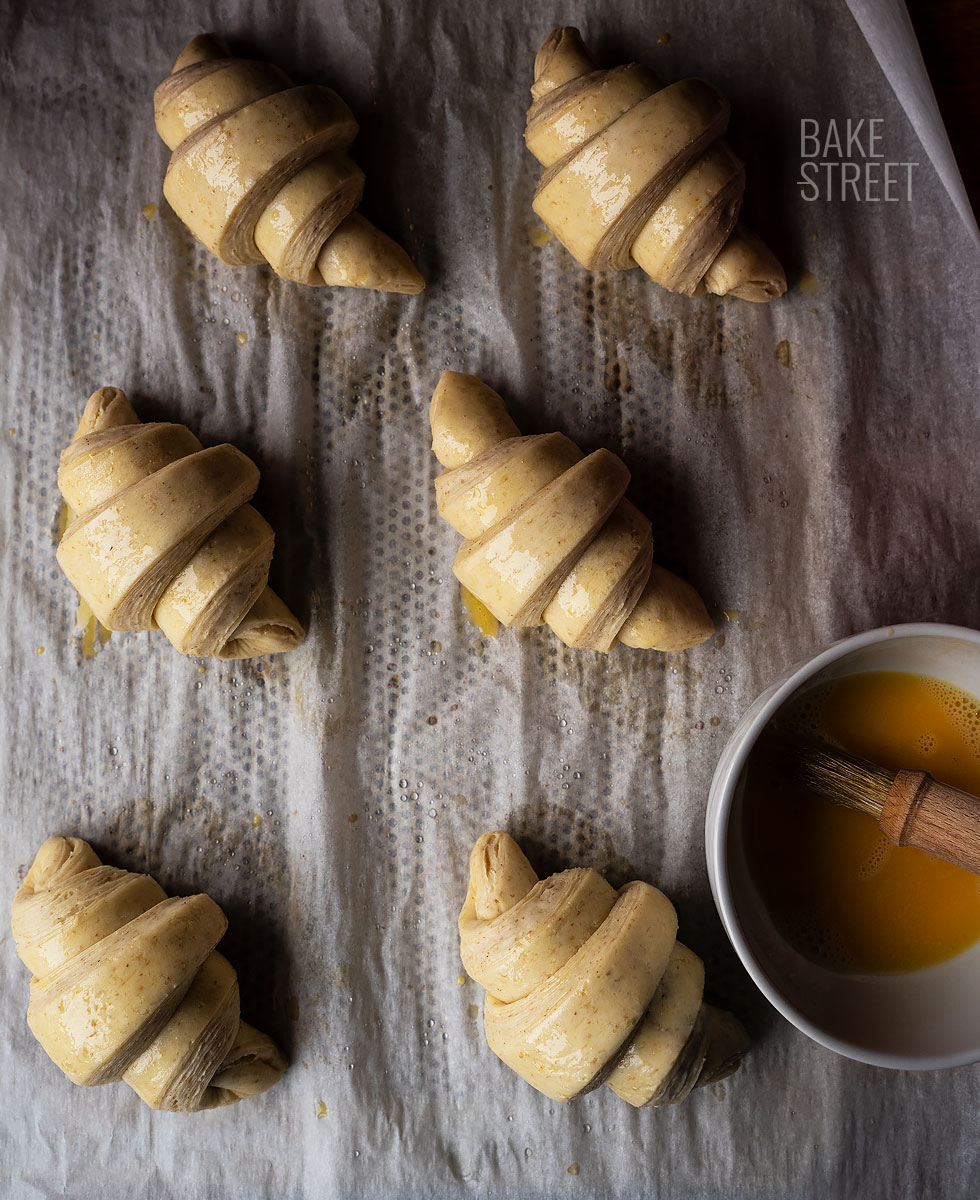
Perforated tray and pastry brush.
Making the recipe.
When making croissants, we must be clear that it is very important to use quality ingredients. This will not only be noticeable in the final result of the product, but also in the taste.
They can be made with sourdough, yeast or a hybrid dough (sourdough + a pinch of yeast). this time I have left you with the classic and traditional version made with yeast. The recipe I leave you with, as well as the whole process, is a mixture and adaptation of the croissant recipe by Olivier Magne which I learned in his Masterclass with Yohan Ferrant too, and Jean Marie Lanio.
Croissants recipe
Ingredients for 14-15 croissants
- 500 g bread flour or, ideally, T45 flour
- 130 g cold water
- 100 g cold milk
- 50 g sugar
- 20 g honey
- 8 g dry yeast or 24 g fresh yeast
- 35 g unsalted butter at room temperature
- 10 g salt
FOR LAMINATING:
- 255 g extra dry butter, cold and malleable, for laminating
FOR BRUSHING:
- beaten egg + 2 Tbsp of milk
SYRUP (optional):
- 85 g water
- 85 g sugar
Instructions
FIRST DAY
Prepare détrempe (dough).
- In the the KitchenAid bowl, add all the ingredients except the butter for laminating.
Knead on speed 1 for 10 minutes. Increase to speed 2 and knead for a further 5 minutes. In this step it is very important to check the temperature of the dough from time to time, using a digital thermometer. It is important that the final temperature does not exceed 24º-25ºC. If we observe that the temperature rises, refrigerate the dough for a few minutes before proceeding with the kneading. - Once we have a smooth and developed dough, take it out of the bowl.
- Fold the dough into a rectangular shape, stretch it slightly with a rolling pin, wrap it tightly in plastic wrap and refrigerate until the next day, about 12 hours.
Prepare the butter for laminating.
- Place the butter on one of the two Teflon sheets. Cover with the other sheet and begin to beat it with a rolling pin to flatten it.
- Flatten it into a square shape, 20 cm on each side. By folding the Teflon itself, giving 20 cm on each side, we can spread the butter to cover the entire surface and keep it inside the Teflon (as if it were a mould or container).
- Refrigerate the butter until the next day, about 12 hours.
SECOND DAY
Roll out the dough and make the first double fold.
- Roll out the dough so that it has a dimension of 40 x 20 cm.
- Place the butter in the centre of the dough, so that the width of the butter and the width of the dough are the same.
- Fold the ends of the dough over the butter, bringing each end of the dough to the centre. Seal the two folds well together in the centre and at the sides. The dough should be completely sealed on each side.
- Make a cut in the two sides of the dough where the joint has not been sealed.

- Roll out with a rolling pin until the dough measures 65 x 20 cm.
- Make a double fold. Bring one of the ends of the dough to cover 1/3 of the dough. Bring the other end of the dough to join it with the last one we have just folded. Once here, we fold the dough over itself in the same way as if we were closing a book.
- Make cuts in the sides, press gently with a rolling pin, cover with film and refrigerate for 45 minutes.
Make a single fold.
- Lightly dust the work surface with flour. Roll out the dough in a single pass, from the centre towards the ends, avoiding the same place.
- Roll out to approximately 65 x 20 cm.
- Bring one of the ends to the centre and repeat the same process with the other end, placing it on top of the previous one. In the same way as if we were closing a triptych.

- Gently roll the surface with a rolling pin to bring the folds together, make the cuts on the sides, cover with film and refrigerate for 45 minutes.
- If we don't want to shape the croissants that day, we can freeze the dough for 3 hours and then put it in the fridge until the next day.
Shape croissants.
- Lightly dust the work surface with flour and roll out the dough.
- The dough should be approximately 75 x 25 cm long, and the dough should be about 3.5 mm thick.
- Cut out triangles with a base of 9 cm. In the middle of each base, make a cut of about 1 cm. This will help us to form the croissant more easily because it will make it easier to roll the base without pressing the layers of butter.

- Roll out the dough gently, fold the corners of the cut we have made in the centre of the base inwards and roll it into the shape of a croissant. Do not roll up the croissant by putting tension on it.
- Place the croissants on a perforated tray lined with baking paper.

Make fermentation.
- Brush only the surface of the croissants, not the laminated part, with egg beaten with milk.
- Cover with plastic film and leave to rise for about 2 1/2 hours at 80º F/27ºC.
- If we cannot control the temperature and have to bake at room temperature, we leave them to rise for 4 1/2 or 5 hours at 70ºF/21ºC, approximately. We will have to keep an eye on how the fermentation process goes, as this can vary.
Make syrup.
- Add all the ingredients in a saucepan. Place over medium heat and bring to the boil. The sugar should be completely dissolved.
- Once it comes to the boil, turn off the heat and let it cool completely.
- Set aside.
Bake.
- Preheat the oven to 347ºF/ 175ºC (convection).
- Brush again with egg beaten with milk, very carefully, remembering that we must only brush the upper part, not the laminated part.
- Place in the oven and bake for 16-17 minutes.
- Remove and leave to cool completely on a rack.
- If we want to brush them with syrup, we will do so as soon as we take them out of the oven and place them on a rack. The syrup should be at 86ºF/30ºC when we apply it to the croissants if we want to do so.

Notes
- To make croissants we must use a bread flour with a strength of around W=270-320 or 12-14% protein.
- Not all butters give good results when making croissants. We need a dry butter with 84% fat. In case we can't access it, we should use a butter with a higher melting point than many supermarket butters (this is due to the amount of water they contain). I have tried KerryGold and it works well. I'm sure there will be more brands that work well (supermarket), but we must keep in mind that a dry butter is the one that will guarantee good results.
- To be successful with your croissants, always work with cold ingredients and respect the resting times.
- Always handle the dough when it is cold and be careful not to take too long during the rolling out process.
- Ideally, use a metal rolling pin to roll out the dough.
- When rolling out, the butter must be cold, but it must be malleable. In other words, we can fold it without it breaking. The temperature of the butter should be around 53º-60º F/12º-16ºC. If it is too cold, it will crack inside the dough and we will not obtain good results.
- The friction of the mixer raises the temperature of the dough. If we refrigerate the bowl, it will help us to maintain a more suitable temperature for a longer period of time.
- Do not press or manipulate the dough too much once it has been rolled.
- Leave space between the croissants when they are going to rise, as they grow a lot during rising and after baking.
- Preheat the oven well to help the baking to take place correctly.
- The baking time may vary from one oven to another, it is important to know it well and work accordingly.
- Croissants should preferably be eaten the day they are baked. They can be kept in an airtight container or zip bag.

It is true that the process of making croissants at home is somewhat laborious, especially because of the rolling. Doing it by hand is no easy task, plus we have to control the temperature at all times to avoid reaching the melting point of the butter.
But, of course, it is not impossible to do it if you have patience and a bit of muscle for your arms (you will need it!). Laminating, it's hard, believe me.
I wish you a wonderful weekend!
Big hugs,
Eva
This post contains affiliate links
